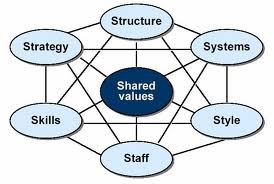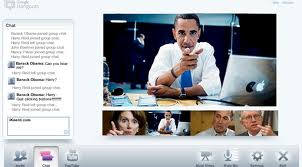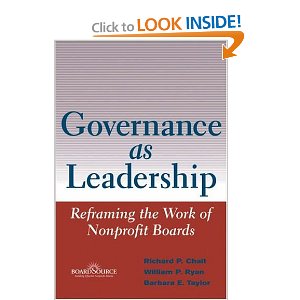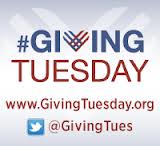Dani Robbins is the Founder & Principal Strategist at Non Profit Evolution located in Columbus, Ohio. I’ve invited my good friend and fellow non-profit consultant to the first Wednesday of each month about board development related topics. Dani also recently co-authored a book titled “Innovative Leadership Workbook for Nonprofit Executives” that you can find on Amazon.com.
 It’s the end of the year, which always seems like a good time to take stock. Did I meet my obligations? Did I rise to the occasion? Did I do what I said I would? Have I become what I aspired to be? Am I living an authentic life?
It’s the end of the year, which always seems like a good time to take stock. Did I meet my obligations? Did I rise to the occasion? Did I do what I said I would? Have I become what I aspired to be? Am I living an authentic life?
For me, an authentic life includes service. So, while I take stock of myself, I also take stock of my Boards, the ones I serve, serve on, volunteer for or am paid by. I encourage an annual Board evaluation process.
The vast majority of Boards do not evaluate themselves. It’s not the norm. I’m not sure why, but it makes people uncomfortable. Yet…Board evaluations are not intended to be report cards; they’re intended to be opportunities for development, reflection and growth.
I’ve seen evaluations done a few different ways, and there is no right way. The following two options seem to be the most prevalent; I’ve also seen anything and everything in between. The only wrong (and career terminal) way to evaluate a Board is for the executive director to do it or to not do it at all. Two options:
- Turn the Board expectations into a self-evaluation form and allow members to rate themselves on a scale of 1-4. If you’d like to take it a bit further, include at the bottom a space to allow them 3 opportunities to commit to (and hold themselves to) future growth or hand it in to the Board Development committee who can hold Board members individually accountable.
- Have the Board Development Committee assess each member individually against the Board expectations, including committee and meeting attendance, giving, event participation, introducing and soliciting new donors, and ambassadorship in the community.
I also encourage you to survey your Board members to determine their opinion of Board process and enjoyment of strategic and generative discussions. It’s not enough for them to assess themselves individually. It’s also imperative that entire Board systems are evaluated and improved or evolved, as necessary and appropriate.
Please note it is the responsibility of the Board Development Committee to ensure evaluations are completed. The executive director can encourage the process and can write the evaluation form, but they cannot evaluate the Board members to whom they report. The Board must evaluate itself.
We can all do better. We can all be more. We serve because we believe in the potential of our organization, our communities and our own ability to affect change.
Take stock, you might like what you find; if you don’t, you can start building new systems toward a stronger future.
What’s been your experience? As always, I welcome your experience and insight.


 For the last few weeks, I’ve found myself in a number of non-profit boardrooms talking to board volunteers about a variety of difficult subjects. These difficult conversations covered the following areas uncomfortable areas: staff reduction, re-organization, service reduction, radical revenue enhancement, board transformation, and so on. In each instance, it felt like a “soul-searching” discussion . . . very big and very weighty. I found myself wishing for a magic pill that I could dispense that would make their path forward a little less difficult.
For the last few weeks, I’ve found myself in a number of non-profit boardrooms talking to board volunteers about a variety of difficult subjects. These difficult conversations covered the following areas uncomfortable areas: staff reduction, re-organization, service reduction, radical revenue enhancement, board transformation, and so on. In each instance, it felt like a “soul-searching” discussion . . . very big and very weighty. I found myself wishing for a magic pill that I could dispense that would make their path forward a little less difficult. So, one organizations might find some comfort in their shared values of:
So, one organizations might find some comfort in their shared values of:


 #7 – Lessons Learned from The Susan G. Komen Foundation’s Use of Social Media
#7 – Lessons Learned from The Susan G. Komen Foundation’s Use of Social Media #6 – How Google’s Recent Changes Affect You and Your Nonprofit Organization
#6 – How Google’s Recent Changes Affect You and Your Nonprofit Organization













